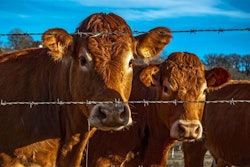
2019 went mostly as planned for the top three pet food companies in the world, but 2020 has already resulted in changes and uncertainty for everyone. Below, we take a look at 2019 numbers and business moves, as well as what the present and future hold for these significant players in the pet space.
1) Mars Petcare Inc.: US$18.09 billion revenue in 2019
In the last year, Mars Petcare has focused on innovation geared towards improving the pet care space as well as pet product expansion into new markets.
In April 2019, the company launched Kinship, which works “to find new ways to realize the promise of transformational technologies in order to create a brighter future for pets around the world.” The division aims to bring pet-relevant startups, veterinarians, investors, entrepreneurs and partners together to grow in the healthcare, nutrition and science areas of the pet space. Among the companies Kinship is currently supporting are Wild Earth (a biotech startup developing sustainable gourmet pet food from fungi), Shameless Pets (which makes dog treats sourced from edible, safe food that would otherwise go to waste) and Jiminy’s (which makes sustainable pet food at treats using cricket protein).
In August 2019, Mars Petcare launched premium wet cat food brand Sheba into the Mexican pet food market. The cat food market has been growing at a higher rate than the dog food market, but wet cat food product variety has been limited in Mexico and in most Latin American countries, largely due to relatively higher manufacturing costs of wet food. With the launch, Mars was likely aiming to reinforce the expansion of its cat food business.
In January 2020, the company launched premium pet food brand Iams in Hyderabad, India. Mars Petcare’s focus on providing quality nutrition to the Indian market is happening in the wake of premiumization and customization there, according to Ganesh Ramani, general manager of Mars Pet Nutrition India. The company hopes to launch Iams in India’s top 30 cities by the end of 2020, according to reports.
Of course, the company is strongly focusing on philanthropy and human and pet wellness in the wake of the current pandemic.
“The COVID-19 crisis demands we work together, find the calm where we can and, most importantly, take care of each other,” said Mars. “Our approach has been, and will continue to be, prioritizing the safety and wellbeing of our associates, doing our part to prevent the spread of the virus and caring for our communities — both people and pets.”
2) Nestlé Purina PetCare: US$13.96 billion revenue in 2019
Purina PetCare’s fiscal year 2019 sales reached nearly CHF$14 billion (US$13.96 billion), compared to 2018’s US$13.13 billion, greatly supporting Nestlé’s overall global growth, according to the company’s financial reports. The sales represented organic growth of 7%, coming largely from Purina PetCare’s premium brands Purina Pro Plan and Purina ONE.
In April 2020, Nestlé released its financials for the first quarter of fiscal year 2020, claiming US$21.40 billion in total group sales for the year so far. Once again, the largest growth contributor was Purina PetCare and its premium brands Pro Plan and ONE, according to the report, with Purina PetCare overall bringing US$3.60 billion to the table (compared to US$3.31 billion during the same period in 2019).
Regionally, in North and South America the largest growth contributor was Purina PetCare, which saw sustained momentum in e-commerce and premium brands. Purina Pro Plan, Fancy Feast and veterinary products grew at a double-digit rate. Latin America recorded double-digit growth for Purina PetCare. In Europe, the Middle East and North Africa the story was much the same: Purina PetCare reported double-digit growth and continued strong momentum, led by Felix, Purina ONE and Tails.com. Asia, Oceania and sub-Saharan Africa also posted strong growth in Purina PetCare, particularly in China (double-digit growth) and Oceania.
As for the rest of 2020, “the financial impact of COVID-19 remains difficult to quantify and will depend on the duration and the economic consequences of this crisis,” said the company in its report. “Nestlé continues to adapt quickly to supply chain challenges and changing consumer behavior. The Group remains resilient given its diversified portfolio of products and presence across the globe.”
In the meantime, Nestlé said it remains committed to being a dependable part of the markets it serves.
“The COVID-19 crisis is having an extraordinary and far-reaching impact on all our lives,” sad the company in its report. “Since the earliest stages of the pandemic, we have been working closely with local authorities and business partners to respond to the challenge. We have three key priorities: safeguarding the health and well-being of our people, ensuring business continuity to meet consumer needs and supporting communities all over the world with local relief efforts.”
3) J.M. Smucker: US$2.82 billion revenue in 2019
Smucker’s US$2.82 billion in 2019 pet food and treats revenue increased from US$2.20 billion in 2018, according to the company’s financial reports. U.S. retail pet food sales made up 39% of all fiscal 2019 net sales, and by the end of the year pet specialty accounted for 6% of all Smucker retail sales. The company’s pet food and treat segment profits for fiscal year 2019 stood at US$503.4 million, compared to US$439.4 million in 2018.
In fiscal year 2020 Smucker’s pet food sales have declined overall, even with an unexpected fourth-quarter boost, according to reports. In the first quarter pet food sales went down by 4%, with some brands losing business even as others gained.
“Momentum for the majority of our pet brands continues to be masked by the decline in our private label business and the Natural Balance brand in the pet specialty channel…,” Mark Smucker, chief executive officer, said during the August 2019 Q1 quarterly earnings call. “The shortfall expectations resulted from underperformance of Nutrish dog food as a result of greater-than-anticipated impact from premium competitors’ aggressive pricing actions.”
Smucker’s second quarter saw net sales in pet food drop another 2%, largely in their premium dog food offerings. Cat food and pet snacks continued to see increases, offsetting some of the larger decline, said Smucker in the company’s November 2019 earnings call. In February 2020, the company reported its third-quarter pet food sales down 5% with profits down 1%.
“As anticipated, Nutrish pet food net sales declined due to the impact of retailer inventory build related to new distribution in the prior year and competitive activity in the premium dog food category,” said Smucker during the earnings call.
Not unexpectedly, the COVID-19 pandemic changed Smucker’s trajectory quite suddenly right before the company’s fiscal year 2020 ended in April. Originally Smucker expected to see net sales to be down 3% for the year; now the company is predicting them to be down 1%.
“Unprecedented customer and consumer demand in the company's fourth quarter has improved its fiscal year financial expectations,” said Smucker. “Following a significant increase related to consumer ‘stock-up’ shopping during the month of March, the magnitude of demand increases has begun to moderate. However, consumer demand and customer orders remain elevated.”
Also unsurprisingly, Smucker’s original fiscal 2021 outlook has gone right out the window, with updated details to be released at a later date.
“Due to uncertainty about both near-term and long-term implications related to COVID-19, including the length and severity of the pandemic, the duration of stay-at-home orders and social distancing requirements, and broader macroeconomic considerations, the company's previous commentary regarding fiscal year 2021 financial direction is no longer applicable,” said Smucker.

















